The Huawei Mate 8 Review
by Andrei Frumusanu on January 5, 2016 1:00 PM EST- Posted in
- Mobile
- Smartphones
- Huawei
- Cortex A72
- Kirin 950
- Mate 8
- CES 2016
Camera Still Picture Performance
The Mate 8 is equipped with a new camera module sporting a new sensor from Sony. The IMX298 is a 1/2.8” sensor with a 1.12µm pixel pitch offering resolutions of up to 16MP in 4:3 format. This marks a departure from the RGBW design that Huawei had adopted last year with the IMX258 in the P8 and Mate S. While the RGBW sensor definitely was able to demonstrate advantages in low-light photography it lacked detail compared to traditional Bayer RGBG sensors in well-lit scenarios.
| Camera Setup | ||||
| Main (Rear) | Front | |||
| Sensor | Sony IMX 298 1/2.8" 1.12µm pixel pitch |
Sony IMX179 1/3.2" 1.4µm pixel pitch |
||
| Resolution | 4608 × 3456 16MP 4:3 |
3264 × 2448 8MP 4:3 |
||
| Optics | F/2.0 aperture 27mm eq. focal length |
F/2.4 aperture 26mm eq. focal length |
||
| Stabilization | 3-axis 1.5° OIS | - | ||
For the first time we see Huawei push the sensor’s resolution up to 16MP which should theoretically allow the new module to resolve more detail compared to last year’s models as well as the Mate 7. Huawei continues to maintain a F/2.0 lens aperture with a 35mm equivalent focal length of up to 27mm, enabling a wide field-of-view.
Early software issues: A case of severe near-sightedness
When I received my Mate 8 review unit I was curious to test out Huawei’s promised improvements in camera quality, but I what I was met with were some very concerning samples that were worse than what a cheap budget smartphone could produce.
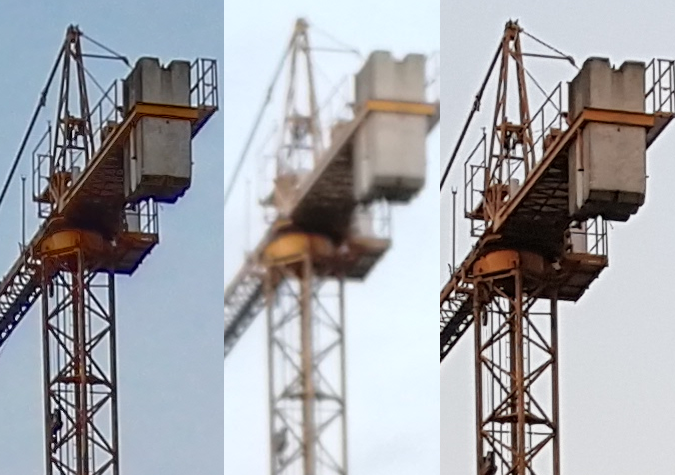
Mate S - Mate 8 B116 - Galaxy S6
The phone consistently was producing extremely blurred pictures that were far inferior to any other smartphone. At first I didn’t know what was causing this as the Mate 8 introduces both a new sensor, module as well as ISP in the Kirin 950.


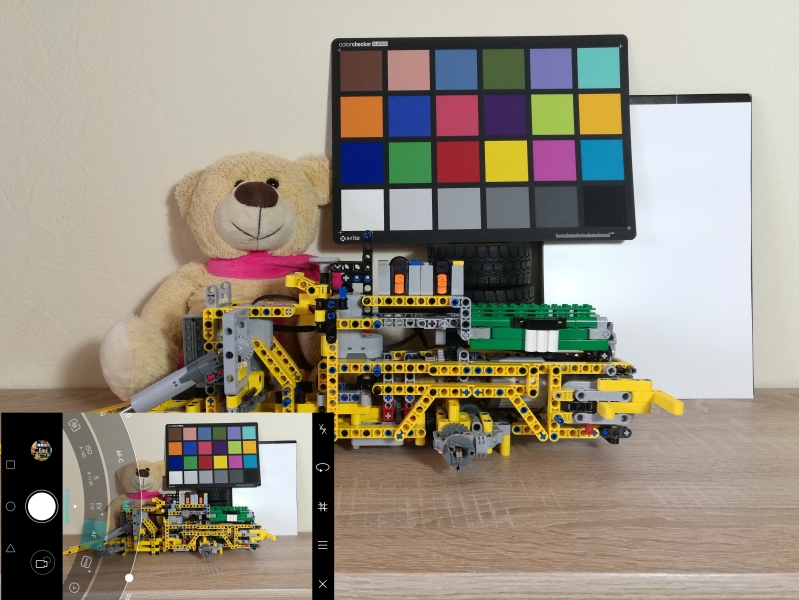
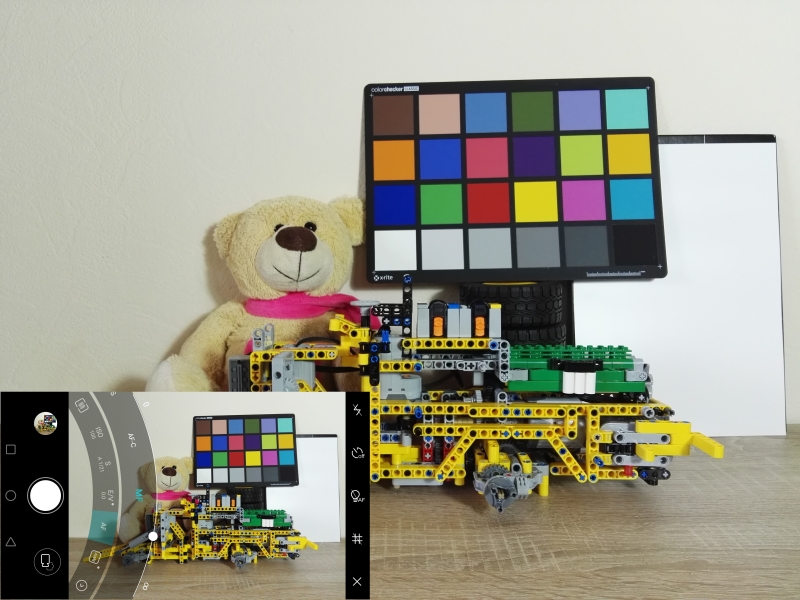

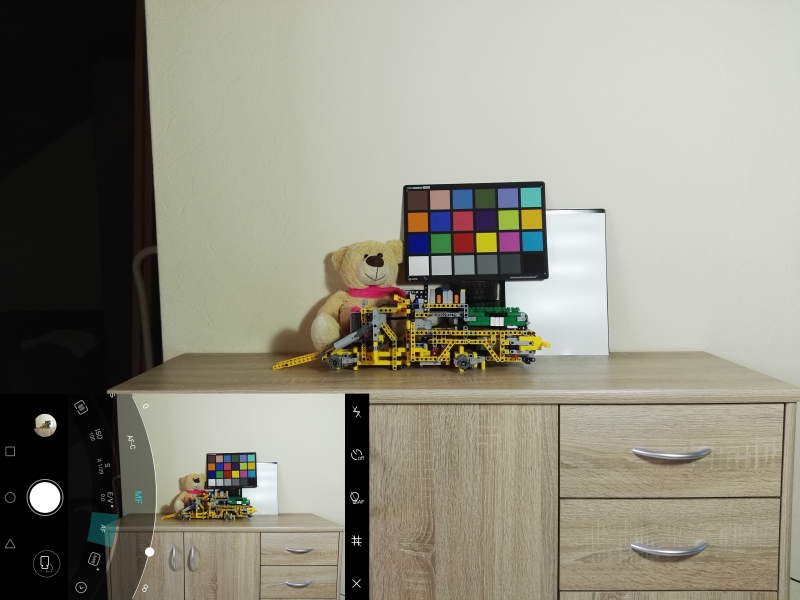
Mate 8 vs Mate S
After further testing and investigation it seems that the focus mechanism of the camera is malfunctioning. A good way to demonstrate this is to launch the camera in the phone’s “Professional” manual mode and to open up the manual focus slider UI. While focusing on objects via manual selection on the screen, one can see the focus slider adjust between its minimal and maximal focal length.
The issue seems to be that the Mate 8 in its early software isn’t able to focus correctly on objects further away than ~75cm-1m away and tries to focus to infinity in basically any shot that is not a close-up frame of an object.
Reaching out to Huawei they confirmed that this is currently a software issue and that we’ll be seeing an update pushed out in the “near future”. Unfortunately this means that I wasn’t able to complete a proper camera evaluation of the Mate 8 as basically all pictures suffer from severe blurriness and chromatic aberrations due to the out-of-focus lens.
We’ll be updating the article with a revisited camera evaluation and comparison tests against competing devices once Huawei pushes out the firmware update to resolve the focus issue.
Day-Time Photography
As such, the following samples aren’t representative of the end product but at least we’ll be able to get an idea of Huawei’s processing and exposure handling in the Mate 8.
Ignoring the lack of detailed due to the focus issue, the Mate 8’s daylight camera samples seemed to lack vibrancy, colour saturation and contrast. This was mostly caused by the HDR mode that tended to cause shots to become washed out as the SDR shots were better in terms of colour reproduction in bright light. The issue with the SDR shots however were that they consistently weren’t exposed enough.
Night-Time Photography
In night-time shots the Mate 8 fared much better and seems to offer good exposure and colour reproduction with low noise levels. Unfortunately again because of the focus issue it’s hard to give a more detailed evaluation as we continue to see blurred out photography.
Overall it’s just impossible to rate the Mate 8’s camera so we’ll have to delay the full verdict to more in-depth follow-up once Huawei updates the device’s firmware.






















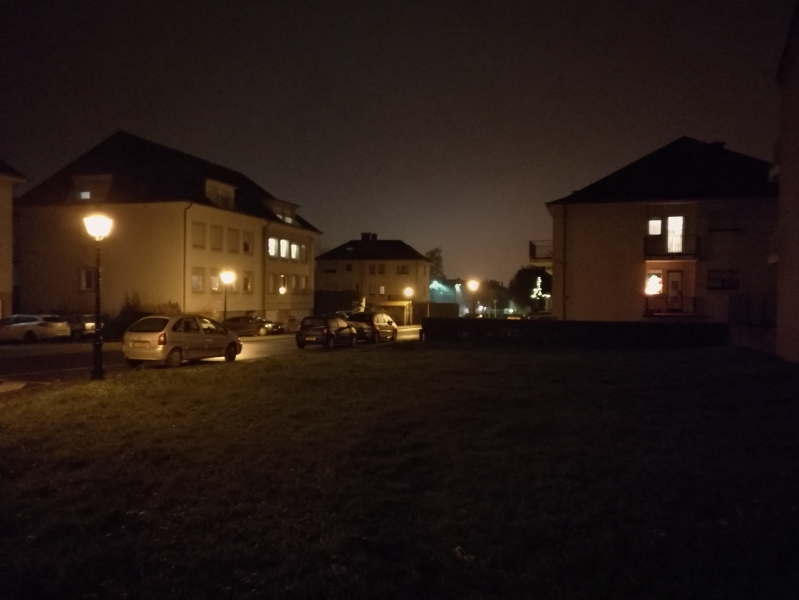















116 Comments
View All Comments
UtilityMax - Tuesday, January 5, 2016 - link
Like iPhone is not made in China..fanofanand - Wednesday, January 6, 2016 - link
My post was not in reference to the country the phone is built in (I have never owned a single apple product BTW) but rather the country that is designing this phone. The Chinese don't exactly have a reputation for quality. See the Bahamian resort in bankruptcy because of incompetent Chinese builders. As a perfect example. The long term durability of apple products are a known quantity, the same cannot be said for Huawei. My point was, you need to provide a compelling reason (price) to entice enough people to gain traction. This is like trying to go 0-60 instantly.MobiusPizza - Wednesday, January 6, 2016 - link
That is stereotyping to the extreme.If apple products are known for quality, explain antenna gate, yellowing Macbook screens and overheating Nvidia GPUs in Macbook. My point is, the country it is designed in may have historically associated with cheao quality, but doesn't mean every thing would be. For every one competent engineer in the west you can find 10 in China. The historical fact that smaller Chinese companies weren't focused on quality but more on quantity was not due to Chinese people lacking design expertise, but was driven by world demand in cheap products. Nowadays, especially big Chinese companies with stake in brand image, are much more quality focused since even local market , the more affluent Chinese general population, are increasingly demanding higher quality products. The shift is rapid.
A recent independent blinded tests for example of Japanese vs Chinese made rice cooker for example resulted in no perceived quality difference.
s.yu - Saturday, January 16, 2016 - link
Which blind test? I only noticed the laughable CCTV tests done by Chinese officials. That was a good laugh, really.ddriver - Wednesday, January 6, 2016 - link
Your view is bigoted and narrow-minded - the chinese can build lousy quality and they can build good quality - whatever the customer wants and pays for.Sure, there is that thing where a lot of companies seek to manufacture in China for the low manufacturing cost, enabling low purchase cost, thus quality is compromised for the sake of pricing.
But all in all, the chinese are capable of producing as high quality products as anyone else. It is not rocket science. Whether on not it is quality is not a subject of expertise but to whether or not you want quality.
jasonelmore - Wednesday, January 13, 2016 - link
we taught the Chinese how to make a good phone. In the case of the iphone, Apple gave them the tools, and knowledge on how to produce a quality product. it was a partnership. Apple shipped all their CNC milling machines (apple bought out the CNC Manufacturing industry for 5 years, nobody else could buy one). They are also a stake holder in many of the Foxconn factories (because they helped build them due to their volume purchase orders).Chinese have cheap labor, and many engineers, and they have towns built around electronics manufacturing. To say they did this all on their own is not true.
invinciblegod - Wednesday, January 13, 2016 - link
Exactly! It's exactly like how Japan learned how to build cars from the US companies, and now everything Japan makes can be wholly contributed to US expertise!invinciblegod - Wednesday, January 13, 2016 - link
/sarcasms.yu - Saturday, January 16, 2016 - link
lol good one.levizx - Wednesday, January 6, 2016 - link
So, who DESIGNED the "Bahamian resort"? Apparently "Chinese builders" shouldn't matter, incompetent or whatever, so that can't be "a perfect example" as you explicitly pointed out in Apple's case.